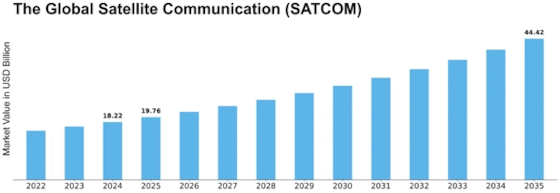Satellite Communication Market – Bridging the Global Connectivity Divide

The modern world relies on fast, secure, and reliable communication systems. While terrestrial networks dominate urban areas, satellite communication ensures that even the most remote regions stay connected.
The Satellite Communication Market has become a vital part of global digital infrastructure. It connects continents, supports global trade, and plays an essential role in defense, weather forecasting, and maritime operations.
As per latest industry analysis, the market’s size, share, and growth continue to expand thanks to advancements in high-frequency communication, AI-based data processing, and improved satellite constellations.
Technological Innovations Enhancing Performance
The emergence of advanced antennas, modular payloads, and automated control systems has transformed satellite operations. These innovations reduce latency, enhance reliability, and improve power efficiency—critical for mission-critical applications like defense and disaster relief.
Forecast and Industry Trends
Among the top trends, the convergence of cloud computing and satellite data analytics stands out. This combination allows real-time environmental monitoring, disaster prediction, and agricultural analysis. The forecast for the satellite communication industry remains promising as digital ecosystems rely increasingly on global connectivity solutions.
FAQs
Q1: What are the benefits of using satellite communication over terrestrial systems?
It offers global coverage, resilience during disasters, and accessibility in remote areas.
Q2: How is artificial intelligence impacting satellite communication?
AI enhances data routing, predictive maintenance, and efficient frequency management.
- Art
- Causes
- Crafts
- Dance
- Drinks
- Film
- Fitness
- Food
- Jeux
- Gardening
- Health
- Domicile
- Literature
- Music
- Networking
- Autre
- Party
- Religion
- Shopping
- Sports
- Theater
- Wellness


